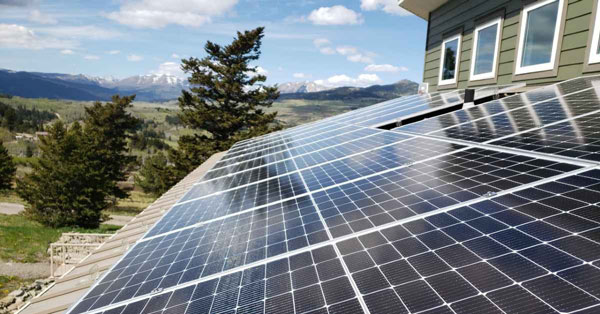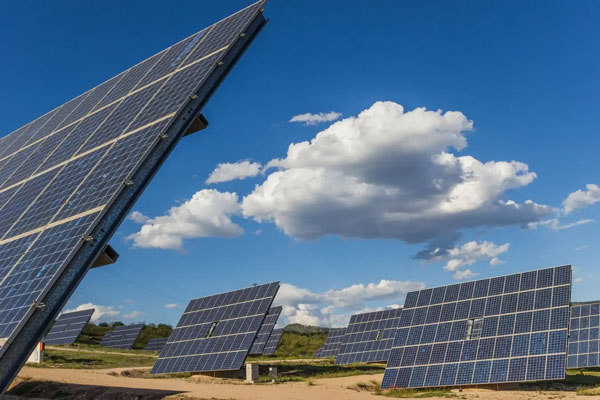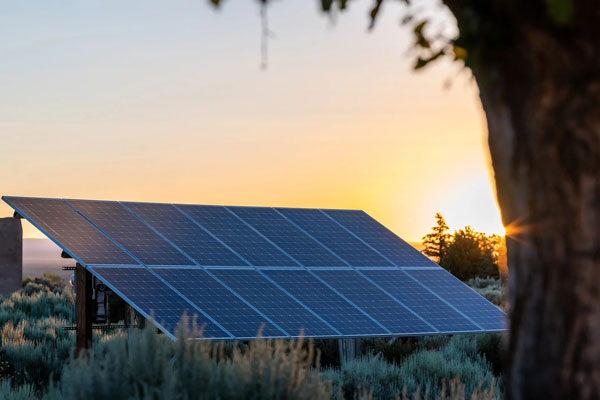Assess Roof Structure
Assess the Structural Integrity of the Roof Solar panels can be mounted only on a structurally sound roof, which has to be evaluated. Given the additional weight to be installed, the existing roof’s structure should be checked during detailed inspections. A structural engineer can use 3D CAD software to simulate the solar panels’ load and evaluate the existing roof’s load-bearing capacity with regard to roof joists and beams. Factors to consider are the roof’s age and material it was made of, along with any previous damages and repairs. A general requirement is that a roof should be less than ten years old, which would minimize any future complications. Concrete or steel-made roofs are probably a better option than wooden or asphalt rooves due to their higher load-bearing capacity and longer lifespan. Determine Solar Panel Layout A correct solar panel layout is crucial for maximizing energy efficiency through appropriate orientation and installation techniques. It requires determination of solar panels’ optimal angle and direction, to avoid energy loss during transmission. Sun path chart and software such as “PV*SOL” should be used to determine the building’s solar exposure, following recommended orientation systems,. At Denver Mart facility, the panels were installed facing south away from any potential shadow, while being inclined at a 30-degree angle for increased sunlight-collecting, taking into account the prevalent wind and snow load patterns in the area. Analyze Energy Consumption Patterns Before installing the solar panels, the actual energy consumption patterns of a building should be evaluated based on availability of the data. It means that monthly data on energy consumption should be collected from utility bills, and peak load times of the building should be registered. Since the facility worked only during the day, the prepared solar panel system will be customized to meet this demand, avoiding power cuts or excess electricity production. A commercial office building might use 10,000 kWh/month of energy, probably 70% during the day. This amount of energy should be the goal for a solar panel system to supply, which might also partially be grid-tied through the national services of net metering.. Select Proper Materials Selecting high-quality materials is essential for the efficient performance and longevity of the solar panels’ installation. High-quality solar photovoltaic cells, strong mounting and inverting equipment should be utilized. Forc example, the optimal design decision at the Googleplex facility in Mountain View was to install high-efficiency monocrystalline panels of the relatively small size on the same roof. These panels are often used for their longevity and robustness against environmental influence, were not an exception in that case.
Choose the Right Panel Size
Choosing the appropriate size of solar panels is a significant aspect that affects the energy produced by a solar system on a commercial building and determines how effectively the space is utilized. Solar panels installed in corporations and businesses should be the right size relative to the building’s electricity demand and rooftop area available for installation. If you are in charge of designing a solar system layout, reviewing the process of choosing the convenience of the solar panels is a good idea. Calculating the Building Systems Capacity To determine the approximate system capacity that can meet the building’s electricity demand, the system capacity needs to be roughly estimated. If the building uses 120,000 kWh of electricity annually, to have the solar system accommodate half of it, the electricity capacity to be 60,000 kWh of electricity a year. Once you have calculated the energy consumption, the related electricity system will be established for the building’s solar system. Assessing the Roof Area Next step is to assess the rooftop area and to determine the number of panels you can fit on the roof. To leave space for maintenance between the panels’ arrays, the panels should not be completely fitted without spaces in between. It would be a great idea to use the laser for measuring the roof to be covered and to consider the obstacles such as additional structures like vents and HVAC, which may not be suitable for panels installation. Imagine a situation where mr 148\ \text{cm} ×100 is the average size of commercial panels; it means that your building should be able to accommodate around 100 panels that you are willing to install on the roof considering also the structural support needed. Selecting the Type of Panels You also have to consider types of panels to be used in the systems because they influence the systems’ efficiency, size, and weight. Higher efficiency panels are better suited for commercial systems because they produce more power per square foot. Picking monocrystalline panels can be more efficient comparing to polycrystalline ones. It is highly important to choose panels for a specific system designed and make sure that the panels’ voltage matches the inverters’ voltage. A 330W panel is longer that suits the retailer’s roof on less physical area. The maximum voltage for roof panels is 1000 V, which is compatible with 1000V DC inverter.Learn About Installation Options
It is crucial to examine different types of solar panel installation when it comes to a commercial building in order to use it to the fullest and make it unobtrusive. The type of installation essentially refers to different methods of equipment placement and has a direct impact on the efficiency of the solar energy generation process as well as the condition of the building’s roof and its accessibility. It is possible to highlight track-mounted solar panels vs. fixed mounts, ballasted vs. penetrating mounts, and integrated solar systems. Fixed Mounts vs. Tracking Systems While fixed mounts are the most commonly adopted for their cost-effectiveness and straightforwardness, solar panels that can move throughout the day to follow the sun’s trajectory generate around 25% more energy. In particular, these tracking systems differ in one or two variants by moving the panels around to catch sunlight directly by means of rotating them along one or two different axes. While highly beneficial, these tracking systems are more cumbersome, require active maintenance, and may expose a user to potential dangers as well as cause mechanical damage. Under such conditions, the integral parts of the system will wear out quicker. The San Diego Convention Center has currently built a tracking system on the top of the roof to manage their large spatial capacity more effectively. Ballasted vs. Penetrating Mounts Ballasted solar panel installation does not penetrate the roof and hence is the least likely to develop leaks due to the roof membrane puncture. Each ballasted mount features concrete obelisks compensating for the upward force caused by the wind. A commercial office building of one of the interviewees in New Jersey uses a ballasted mount with concrete panels because the roof they are placed on is flat and the ballasted weather protects the roof without the need to penetrate it and interfere with business. In turn, penetrating mounting brackets are attached to the roof through bolts and, for example, guarantee the higher security in the event of strong winds. Because every rooftop has different exposure to wind and state damages, it is essential to be aware of the limitations, as well as only with a sound roof to carry out the penetrating mounting. Integrated Solar In addition to the classical rigid solar panels placed on a roof by means of mounting brackets, it is possible to use solar technology integrated into building materials. Solar shingles, are made from the same material traditional shingles are made of and function as regular solar panels installed on a home’s roof. An interviewee from Australia where solar tiles are commonly used in new development says, for example, that when solar energy is originally installed with new constructions, it suddenly becomes more power-friendly. From both the street and the yard, the commercial building’s appearance changes to the in-built structure while becoming more sustainable.Troubleshoot Licensing Issues
One of the critical steps of the solar panels’ installation on commercial buildings is navigating the process of obtaining the corresponding licenses and permits. Ensuring that these issues are addressed allows maintaining the compliance of the project with local, federal, and state regulations and avoids legal issues and expensive delays. Understand Local Build Codes In each area, the local build departments have their particular rules applicable for the installations of solar projects. It is crucial to contact the industry authorities to retrieve the information about the relevant provisions. In some areas, such as Miami, the solar installations need to be powerful enough to withstand the hurricane-force winds, which may give rise to certain engineering certifications and impose special construction standards on the developer. Acquire the Permit The permit acquisition process usually requires the submission of the detailed plans of the construction. In the case of solar panels, the company may need to submit the site plans, structural engineering reports, and the plans of the electrical system. Getting these permits before the project incidentally begins ensures that no legal issues will have to be faced and dispelled, and that the installations are up to code. An optimal strategy is to employ a professional service for handling the solar permitting. Such services are likely to significantly reduce the burden of documentation and administrative work for businesses. Manage State and Site Regulations Alongside local regulations, every installation of solar panels to the grid has to be compliant with state and national regulations. For instance, in many states licensed professional installation is a prerequisite for claiming the state’s tax incentive or the cash rebate. The installations will also need to be compliant with the National Electrical Code and other types of environmental regulations. Handle the Grid Connection Approval The final process required for getting the solar systems of commercial facilities online is notifying the local utility company of their operations. They may initiate the inspection of the site in order to ensure that the safety standards and the level of performance are being met. Utility companies also take specific steps necessary for their stability to be maintained and ensure that the appropriate equipment and configurations are used. A large retail chain in California had to comply with Pacific Gas and Electric. The inspections had detected that several specific pieces of equipment had to be purchased and set up in order to connect the equipment with the grid and the team needed to visit the site multiple times in order to confirm that it was compliant and make the corresponding adjustments to the setup.Arrange Installation
Installing solar panels on a commercial building requires organizing the process, involving trained professionals and strictly keeping to a timetable. The installation will be effective, in terms of duration, legal compliance and its effects on normal business operations if these factors are taken into account. Trained Professionals One of the initial steps is finding an installing company which is highly rated. One of the top Accredited Solar Companies CA, Semper Solaris employs North American Board of Certified Energy Practitioners . They certificate the high quality of the service. Semper Solaris have installed the solar panels for a tech company in Silicon Valley which also demanded the NABCEP certified installation team.
Setting the Date
The actual timing of the installation should be arranged so that it does not interfere with normal operations of the business. It means that either the installation should occur during off-peak hours or on the days when the office or shop is closed. Walmart’s retail store could schedule the arrival of the installing team in the morning hours before the opening.
Preparing the Site
Arranging the base for the installation is vital to the correct development of the process. The installation site must be completely ready: the roof clear and entirely empty, the strength of the support checked since the few days before the installation I advise to use for checking the spot every day to be sure to have plenty of time to resolve any possible issues, the electrical wiring should be already put through, Civil Engineering notes.
Before the Installation
The pre-installation review should be conducted: all the people that will be involved in the process of installation of the system should be present and the plans of the layout, safety details and the control over the electrical systems should be considered in exhaustive detail.
Controlling the Process
The project leader or the shop supervisor should carefully follow the details of the installation process and ensure that all of the specification, especially the technical conditions mentioned in the documentation, are being upheld.




